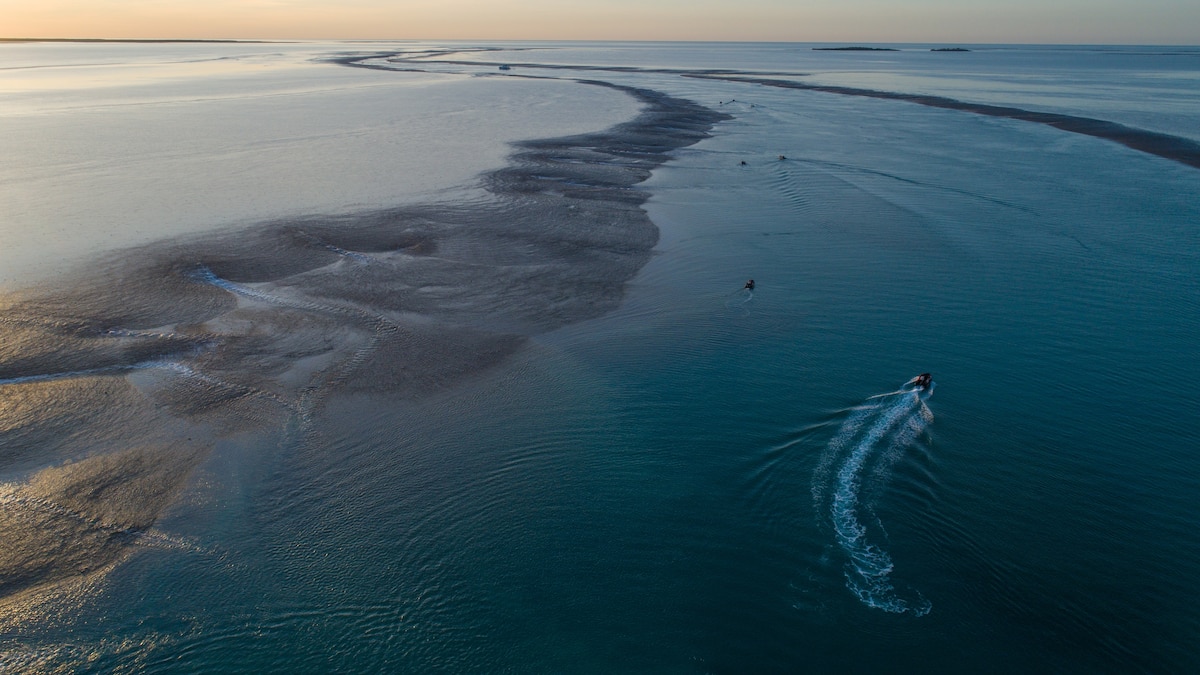- Travel
Early mapmakers and explorers covered the seas with mythical lands. Here’s where to find ones that turned out to be real.
Published August 24, 2022
11 min read
From the dawn of cartography, ghosts haunted our maps—until modern technology purged them like a scientific exorcism. Due to myth, miscalculation, optical illusion, or outright lies, hundreds of nonexistent landmasses were planted on maps, where some remained for centuries.
Up until the past decade, these erroneous listings prompted many futile and occasionally deadly ocean voyages by crews seeking treasure, fame, or virgin territory. Hy-Brasil, supposedly located in the Atlantic Ocean west of Ireland, was said to render visitors immortal. Gamaland, east of Japan, drew sailors in search of its legendary gold and silver. The phantom Sannikov Land, in Siberia, even managed to vanish part of a Russian expedition crew.
Although such specters have been all but erased from maps, travelers can trace these mysterious tales by visiting cartographic libraries, monuments to explorers and mapmakers, and ghost islands that proved real.
Mapmaking boom
Each day, tourists in Brussels’ leafy Petit Sablon Square pass the statue of Belgian cartographer Abraham Ortelius, who inspired explorers to pursue geographic specters. In 1570, Ortelius published the first modern atlas, Theatrum Orbis Terrarum (Theater of the World), copies of which can be viewed at many libraries, including the Library of Congress in Washington, D.C. The atlas featured 70 detailed maps, which revealed a trove of unexplored islands. Many, as it turned out, existed only in this book.
A rush of sea exploration by Europeans in the 1500s triggered a boom in mapmaking, which then sparked more expeditions, reports of which swelled atlases further. “[Mapmaking] was a competitive business, and cartographers were desperate for the latest information gleaned from returning explorers to fill the blank spaces,” says Edward Brooke-Hitching, author of the 2016 book The Phantom Atlas.
“Inevitably, phantom geography started to blossom on the page. Rumors and unconfirmed sightings, mistaken calculations—before longitude the locations of islands were recorded using dead reckoning, which was essentially guesswork—and even mythology were all incorporated by the mapmaker to publish the fullest picture of the newly unveiled world.”
Once a ghost island was born, it was hard to banish. They were only removed from maps after a ship visited the island’s listed location and confirmed its nonexistence, Brooke-Hitching says. This task was complicated by optical illusions caused by light refractions, including the infamous fata morgana, which “presents itself as a distant strip of cape lying tantalizingly close, and yet always just out of reach.”
Claiming shadowy lands
These phantom islands spawned many problems for seafarers chasing these shadowy landmasses, according to Kevin Wittmann, a researcher at Spain’s Universidad de La Laguna, who completed his thesis on ancient maps. “Those expeditions were expensive, and in some cases dangerous, and finding out that they were sailing to a place that doesn’t exist was not good,” Wittmann says.
In the early 1900s, German explorer Baron Eduard Vasilyevich Toll led a mission to Sannikov Land, first reported by a Russian ship in 1810, about 430 miles north of mainland Siberia. After Toll’s vessel became trapped by ice in the New Siberian Islands, he and several colleagues used sledges and kayaks to head for Bennett Island, which tourists can now see on Arctic Ocean pleasure cruises. Those explorers disappeared, as did Sannikov Land, which likely was just a mirage caused by fata morgana, according to Brooke-Hitching.
Some ghosts even caused diplomatic tensions, Wittmann notes. Most famous was Bermeja Island, west of Mexico’s Yucatán Peninsula, which became central to a 2000s territorial dispute between the United States and Mexico over oil exploration—but searches in 1997 and 2009 concluded it didn’t exist. Bermeja resided on maps for more than 400 years until its recent purging. It could still be real, Wittman says, but concealed by rising sea levels.
(Ghost stories scare up new life at these historic hotels.)
Other ghost islands have evolved in the reverse fashion, according to Malachy Tallack, author of the 2016 book, The Un-Discovered Islands. Tourists can now board Antarctic cruises that visit the former phantom Bouvet Island. This icy, uninhabited landmass 1,500 miles southwest of Africa was widely considered myth for many years after it was first spotted in 1739 by a French navigator, Tallack says. Bouvet was not seen again for almost 80 years, and many sightings logged it in separate locations and with different names. “It wasn’t until nearly 200 years after the first sighting that the island was properly named, and claimed, by a Norwegian expedition,” Tallack says.
Not all phantoms hide in such remote locations, though. Travelers on the daily ferries that cross the ocean

